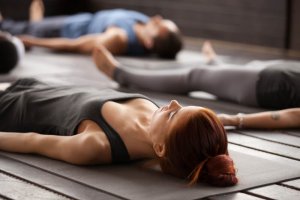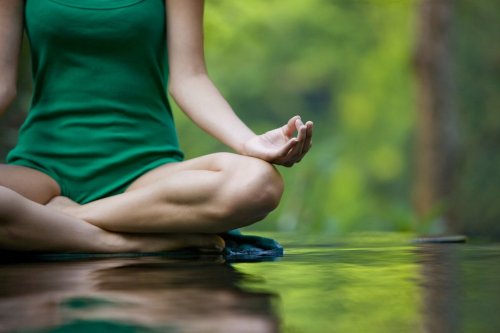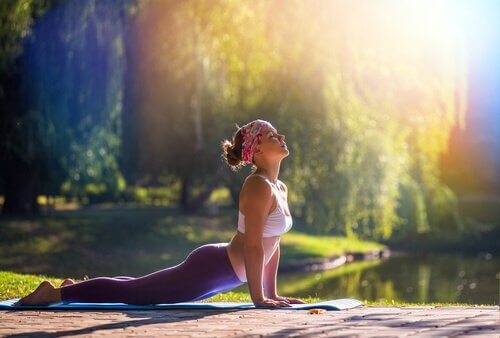Yoga for Beginners: 5 Basic Yoga Poses


Reviewed and approved by the doctor Karla Henríquez
Yoga as a discipline is a system of exercises made up of poses or asanas. In each pose, you practice flexibility, strength, and meditation. It takes dedication and effort to advance in the practice, but there are basic yoga poses to help you start.
The system of asanas comes from Hindu yoga texts. Each asana has a Sanskrit name and particular technique. And while the practice can be advanced or basic, the important part is to be connected to the present moment.
These basic yoga poses are good for beginners because they’re not complicated and you don’t have to be an expert in the technique to do them right. They’re natural poses, and you have the chance to relax between them.
In some approaches to yoga, the poses and physical activity are meant to strengthen the body. Although meditation and relaxation aren’t as emphasized here, don’t forget to breathe throughout.
If you’re just starting out in yoga, here are 5 basic yoga poses. Take the step and enjoy yoga’s ability to connect you with your own body and soul. Don’t worry if you don’t do it perfectly. With a bit of consistency and discipline, you’ll improve.

1. Shavasana, or corpse pose
The corpse pose is ideal for breathing and relaxing. It consists of lying on your back with your legs apart, your arms away from your body, and your palms face up. Let your fingers relax and curl a bit. Relax your ankles, knees, thighs, and glutes.
Shavasana will let your body release all the tension it has been carrying and breathe. You don’t need to exert yourself; just lay there and breathe.
Take a look at this article too:
Discover Three Yoga Practices to Manage Stress
2. Utkatasana, or chair pose
The chair pose will strengthen your back and legs while releasing tension in your spine.
- To do utkatasana, stand with your legs together, arms at your sides, and your feet at hip-width.
- Inhale and lift your arms towards the ceiling, activating your arm muscles and keeping your palms facing forward.
- Bring your arms to about the height of your ears. Then, bend your knees, trying not to let them go past your ankles.
3. Svanasana, or downward-facing dog pose
Downward-facing dog pose is one of the most basic yoga poses; you’ll encounter it a lot. It’s called a rest post because it helps relax your back after tension builds up in other poses.
- You can start this pose standing or lying down, depending on your routine.
- Separate your legs to hip-width, inhale deeply, and lift your arms towards the ceiling.
- Exhale and bend at the hips until your hands touch the floor. Step back, bring your hips up, and make a V shape with your body.
4. Bhujangasana, or cobra pose
The cobra pose stretches the abdomen and lower back.
- To begin, lay face down on a mat with your arms slightly away from your body and your palms also face down.
- Breathe and bring your palms right underneath your shoulders.
- Stretch your legs back, with the tops of your feet touching the mat.
- Then, stretch your arms as you arch your back. Bring your head back as well.

5. Padmasana, or lotus pose
Lotus pose is ideal for meditating and relaxing your body because it opens your body and mind to the energy of the class.
- To start, sit on a mat with your back straight and legs straight.
- Then bend one knee and bring your foot towards you, holding it with your hand.
- Place it on top of your other thigh, close to your hip.
- Once your legs are crossed, place your hands on your knees and breathe slowly.
Did you know?
These basic yoga poses are simple and can be combined in many different ways. So relax and don’t be afraid to get into yoga! It will strengthen you in both body and mind.
All cited sources were thoroughly reviewed by our team to ensure their quality, reliability, currency, and validity. The bibliography of this article was considered reliable and of academic or scientific accuracy.
- Nagarathna, R., & Nagendra, H. R. (1985). Yoga for bronchial asthma: A controlled study. British Medical Journal (Clinical Research Ed.). https://doi.org/10.1136/bmj.291.6502.1077
- Ebnezar, J., Bali, Y., Nagarathna, R., & Nagendra, H. (2011). Effect of an integrated approach of yoga therapy on quality of life in osteoarthritis of the knee joint: A randomized control study. International Journal of Yoga. https://doi.org/10.4103/0973-6131.85486
- Gilbert, C. (1999). Yoga and breathing. Journal of Bodywork and Movement Therapies. https://doi.org/10.1016/S1360-8592(99)80042-4
This text is provided for informational purposes only and does not replace consultation with a professional. If in doubt, consult your specialist.








